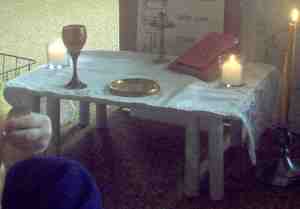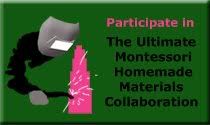It can be so hard for a family coming into Montessori yet wanting to provide the stories they had as a child: Beatrix Potter, fairy tales, and more.... Then we discover that Montessori is heavy-handed about "only reality" for the first plane of development, ages 0-6.
Here are some thoughts and experiences from a recent post I made on a Montessori group. Just random thoughts concerning our experience. I am happy to share more details and answer specific details :)
I personally and Montessori-wise hesitate to suggest any titles of the
particular sort you request, because my own experience as well as the
Montessori "way" is to build a very strong foundation on reality at this
age.
This (strong!) foundation in reality provides fodder for the greatest of imaginations in the elementary years. They can understand timelines, grasp the concept of ancient times and future years, with an intensity those of us who lived in a fantasy world in our primary years can never fully grasp. When a child know what is reality, what is possible; and in elementary years begins to see that all is not well with the world, by adolescent years, the child can fathom great but realistic plans for DOING something about it. There is a JOY in delving into moral tales and imaginative tales in the elementary years, and a TRUE HOPE that carries them through the adolescent years, sometimes already truly DOING BIG THINGS.
(sorry all caps - it is for very heavy emphasis ;) ).
If we give too much fantasy before age 6, that JOY, that HOPE... is gone before it starts. Yes, it can be inflamed to a point (and should be whenever and wherever possible! it's not ALL lost), but the intensity is gone. The depth.
Look at our world of teenagers living in fantasy worlds that are self-destructive, because they didn't get a strong foundation in reality in their primary years. Do we want that for our own children? Really?
Look at our world of teenagers living in fantasy worlds that are self-destructive, because they didn't get a strong foundation in reality in their primary years. Do we want that for our own children? Really?
I have personally found that when children are only exposed to reality during this precious first plane of development, they are ready to delve into stories with talking animals, bears on bikes, etc. around age 5 (even earlier than the official "end" of the first plane of development); however, when you wait to expose the world of pure fantasy to them until at least 5 1/2, you will find an intense love, an intense JOY, they will not be calling Beatrix Potter stories "baby books" - instead, they will be delving into them wholeheartedly and with true JOY.
The child can then delve into fairy tales (which are actually "moral tales" - intended to teach right from wrong in a strong-image-based way - not just to "entertain") on the level the stories were intended.
For example, my son right now LOVES to explore fairy tales - he is a healthy, normal 8 year old boy - yet all those fairy tales that his friends call "girl stories" or "baby stories", he an tell them about the knights, the fighting, the red-hot-iron shoes and the birds pecking out evil stepmothers eyes - and he can explore the question of "what if" these characters came to life today; what if someone we know is living the Cinderella life (before she became princess) - there are no fairy godmothers, but what can WE do to help?
All of this because he had a STRONG foundation of reality. He can truly just ENJOY the tale without wondering about the possibility of magic ruining his life or unnaturally helping it thus that he owes a debt to it (Rumpelstiltskin). He also learns moral lessons on debts, on black magic (which is real), on attitudes towards others, on maintaining hope, on making the choice to help others in need, etc. etc. etc. THESE are the lessons of fairy tales and his male friends who have lost that, are starting to get a taste of the depth of these stories from my son telling them about it in a way they never thought possible.
And he can ENJOY all those books about animals doing human things, although he wishes some of them were written with the vocabulary of an elementary child.
We CAN give fiction in the first plane - but realistic fiction. Something that could actually happen. While a child who has had lots of fantasy fiction can verbally tell you it's real or not real, in fact, they are still confused in their minds; little girls starting watching for their fairy godmothers or for a prince to "save them", they worry about curses being placed them; little boys also worry about these curses as well developing unnecessary fears of things in the dark, when we want to build them strong to face those fears.
 Now - will little boys fight dragons even if they've never heard of
them? YOU BET! There is something in the human memory about some sort of
creature of this type. And THAT is fine! But magic swords are not yet
appropriate for the first plane child (0-6). Wait until age 5 1/2 at
least and watch how deep it goes! It IS amazing!
Now - will little boys fight dragons even if they've never heard of
them? YOU BET! There is something in the human memory about some sort of
creature of this type. And THAT is fine! But magic swords are not yet
appropriate for the first plane child (0-6). Wait until age 5 1/2 at
least and watch how deep it goes! It IS amazing!And do I WANT my son to fight dragons??? YES! I want him to recognize those dragons for what they are in the "real" world and fight them whole-heartedly, with confidence, a humble fear that keeps him prudent in choices, and LOVE.






